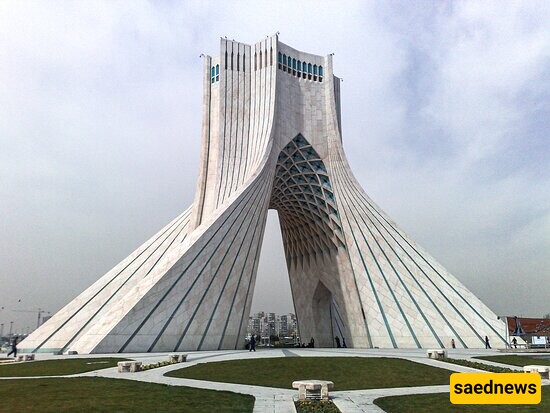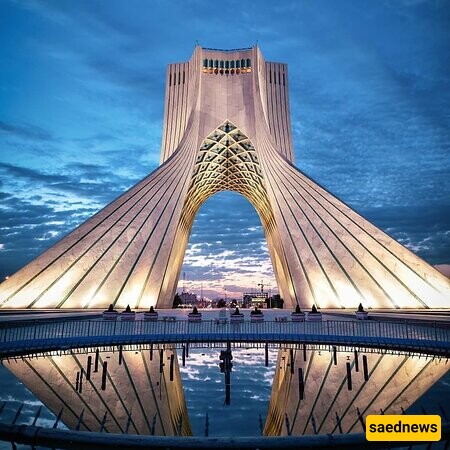SAEDNEWS: Azadi Tower, a central landmark in Tehran, commemorates Iran’s ancient heritage and its modern aspirations. Built in 1971 to mark the Persian Empire’s 2,500-year anniversary, this iconic monument draws countless visitors each year.

According to SAEDNEWS, located at the western entrance of Tehran, Azadi Tower, or “Freedom Tower,” is one of Iran’s most recognized symbols. Standing 45 meters tall, this architectural masterpiece represents both Iran’s deep historical roots and its modern transformation. With its blend of cultural and contemporary design, it has become an enduring feature of Tehran’s cityscape.
A Monument to Persian Heritage
Initially named Shahyad Tower, this iconic structure was commissioned to celebrate the 2,500th anniversary of the Persian Empire. Designed by young architect Hossein Amanat, it was chosen from a national design competition. Amanat's vision brought together elements of ancient Persian and Islamic art, making the tower a fusion of tradition and modernity.
Blending Classic and Contemporary
The tower’s architecture combines classic Persian elements with modern design, showcasing details like archways and geometric motifs reminiscent of Islamic art. Its upward-reaching arches embody progress, while the symmetrical structure reflects Iran’s architectural elegance. Together, these features make Azadi Tower a bridge between past and present.

Building a Symbol of Pride
Construction began in 1969 and was completed in 1971, using Isfahan’s white marble for its facade. The use of local marble emphasizes national pride and adds an element of purity to the design. The tower’s aesthetic is marked by intricate latticework and water features around its base, contributing to a peaceful atmosphere.
Merging Styles for Impact
Amanat’s design references the Chahar-Taq (ancient Persian four-arched structure), combining it with streamlined, modern lines. These distinctive elements make the tower appear both historic and futuristic. The design not only honors Iran’s past but also looks toward its future.

Rebranding a National Icon
Following the 1979 Iranian Revolution, the Shahyad Tower was renamed Azadi Tower, reflecting Iran’s shift from monarchy to an Islamic Republic. Renaming it “Azadi” (meaning “Freedom”) was symbolic of the revolution’s ideals and has since made the tower a monument to Iranian resilience.
A Gathering Place for Iranians
Azadi Tower has become a focal point for public events, from celebrations to demonstrations. It remains a place where people gather to honor both festive occasions and significant moments in Iran’s political and cultural life.Visitor Attraction and Cultural Hub
The Surroundings of Azadi Square
Azadi Tower sits within Azadi Square, one of Tehran’s largest public spaces and a site for cultural events. The square itself adds to the tower’s appeal, serving as a central meeting point for locals and tourists.
Inside the Tower: Museum and Observation Deck
Visitors to Azadi Tower can explore a museum inside, showcasing artifacts and photos of Iran’s rich history. An observation deck offers panoramic views of Tehran, allowing visitors to appreciate the city and the surrounding mountains from a new perspective.
Modernization and Restoration
Efforts have been made over the years to preserve Azadi Tower, with restoration projects ensuring that its marble structure and intricate design are maintained. This preservation allows the tower to continue standing as a monument for future generations.
An Icon of Iranian Identity
Azadi Tower has evolved into more than a historical monument—it’s a representation of Iran’s journey through time. Symbolizing the resilience and aspirations of the Iranian people, the tower’s name, “Freedom,” stands as a testament to national pride and hope.
Azadi Tower captures Iran’s ancient legacy and modern aspirations, blending the past with the future. Serving as both an architectural wonder and a cultural emblem, it continues to inspire pride in Iranians and offers visitors a glimpse into the essence of the nation’s identity and its enduring spirit of freedom.

